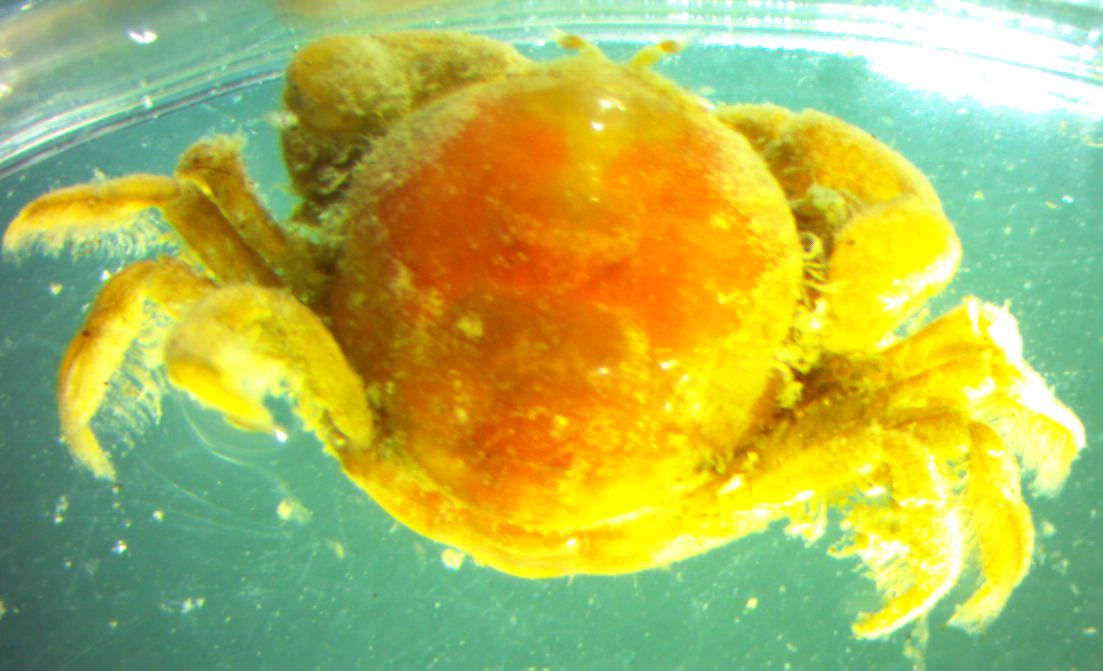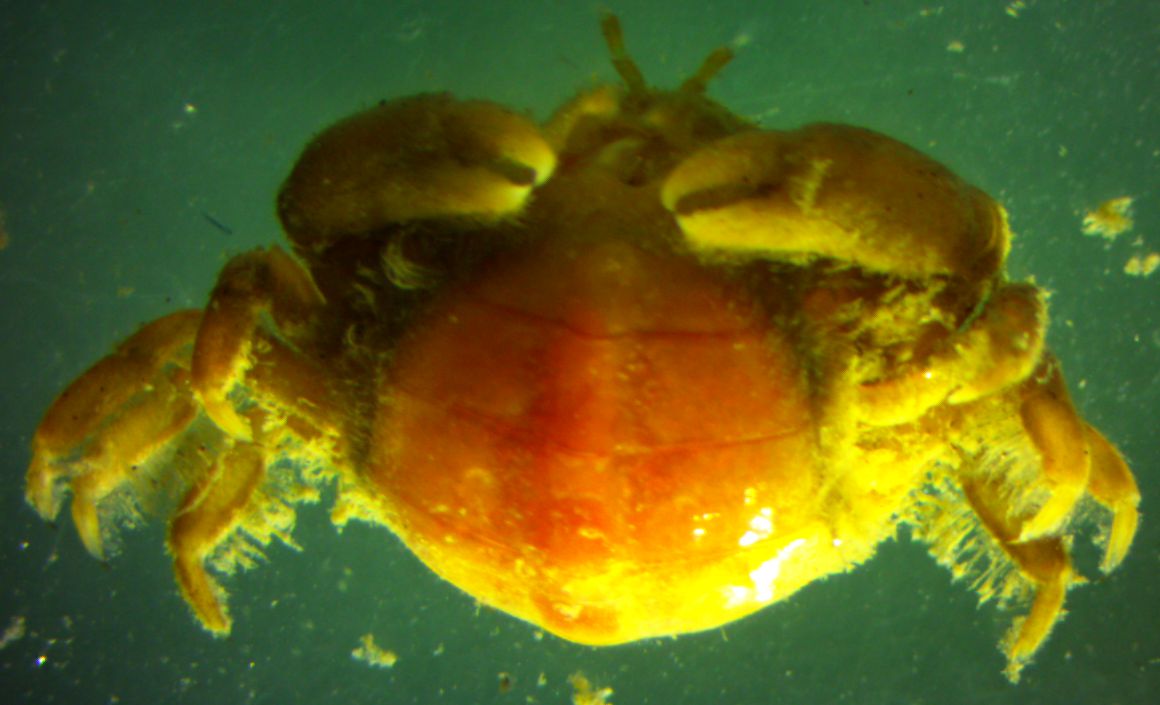Pinnotheres taylori Rathbun, 1918Common name(s): Pea crab, tuberculate tunicate crab |
|
| Synonyms: |  |
|
Phylum Arthropoda
Subphylum Crustacea
Class Malacostraca
Subclass Eumalacostraca
Superorder Eucarida
Suborder Pleocyemata
|
|
| Female Pinnotheres taylori, from within the tunic of Ascidia paratropa. Carapace length 7 mm. | |
| (Photo by: Dave Cowles, July 2025 ) | |
Description: Family Pinnotheridae (pea crabs) is a family of very small crabs that typically live symbiotically with other species, such as within the mantle cavity of bivalves, in the tube of polychaete worms or ghost shrimp, the cloacas of sea cucumbers, or in the atrial chamber of tunicates. The mouth parts of species in this family do not taper anteriorly. They have no rostrum nor teeth (points) either between the eyes or along the lateral margins of their carapace. Pinnotheres taylori has a carapace less than 1.5x as wide as long. The carapace is generally soft (though the carapace of this individual seemed fairly firm). There is no groove running back along the dorsal surface of the carapace from near each eye, but they do have two small tubercles just behind the middle of the dorsal carapace. The carapace of males has fine setae. The dactyls of their walking legs are nearly straight, and the dactyl of leg 5 is only slightly longer than that of legs 3 and 4 (not more than 1/5 longer). Carapace width to 8 mm.
How to Distinguish from Similar Species:Pinnotheres pugettensis is also often found living inside ascidians (tunicates) but the dactyl of the 5th leg of Pinnotheres pugettensis is about 1/5 or 1/4 longer than that of legs 3 & 4. They also are generally in tunicates but favor those that are not transparent. The dactyls of the walking legs of Fabia subquadrata are definitely curved and there is a longitudinal groove back along the dorsal carapace starting near each eye. F. subquadrata lives symbiotically with bivalves rather than tunicates.
Geographical Range: British Columbia and northern Washington
Depth Range: 11-64 m.
Habitat: Within the tunic of transparant tunicates.
Biology/Natural History: This species is symbiotic within the transparent tunic of ascidians Corella willmeriana, Ascidia paratropa, and Ascidia ceratodes.
The large majority and abundant species of true (Brachyuran) crabs walk sideways. In a 2025 preprint, Taniguchi et al. found that at least some Pinnotherid crabs (genus Arcotheres) walk forward. They speculate that the sideways walking in so many true crab species is is because walking sideways allows for rapid escape locomotion options in two directions, providing a selective advantage. Adult Pinnotherids, on the other hand, such as this species, typically live as symbionts in other invertebrates and may not need a rapid escape response.
| Return to: | |||
| Main Page | Alphabetic Index | Systematic Index | Glossary |
References:
Dichotomous Keys:Kozloff, 1987, 1996
General References:
Lamb
and Hanby, 2005
Scientific Articles:
Taniguchi, Cunya, Tsubasa Inoue, Kano Kohara, Jung-Fu Huang, Atsushi
Hirai, Nobuaki Mizumoto, Fumio Takeshita, and Yuuki Kawabata, 2025.
Evolution of Sideways locomotion in crabs (Preprint). doi:
Web sites:
General Notes and Observations: Locations, abundances, unusual behaviors:
The underside of the same female. As with many crab
species, the abdomen
is much wider than in a male. She may or may not be carrying eggs.
Photo
by Dave Cowles, July 2025
Authors and Editors
of Page:
Dave Cowles (2025): Created original page
CSS coding for page developed by Jonathan Cowles
Salish Sea Invertebrates web site provided courtesy of Walla
Walla University
